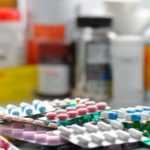Urine Drug Tests: Effective But Easy To Cheat On
With America facing an opioid epidemic, the most effective diagnostic tool for uncovering misuse and abuse of opiates remains on the urine drug tests that numerous businesses and physicians rely on.
But what happens when that “effective” tool is easily cheated – and an entire industry springs up to help the cheaters?
“Many people may not realize it, but there’s a quiet war going on out there aimed at defeating this important test,” says Dr. Matt McCarty, a board-certified physician specializing in pain management and the CEO of Genotox Laboratories.
A quick Google search of “how to cheat a drug test” yields more than 1.5 million results. Blogs give detailed instructions on the use and purchase of devices, adulterants and synthetic urine that allow drug users to slip through the tests unscathed.
“The sole purpose of these products is to fraudulently produce a clean urine test result, and hide the user’s drug misuse, abuse or addiction,” McCarty says.
The cheapest and most foolproof way to cheat is to use substitute urine provided by another person. But another option the cheaters turn to is fake urine that, when warmed, is almost indistinguishable from the real thing, he says.
Apparently, the cheaters are experiencing success. Research presented last September at the American Pain Management Conference reported that traditional validity measures failed to detect substitute or synthetic urine in 98 percent of urine samples where they were present. The United States Drug Enforcement Agency (DEA) has estimated that at least 10 percent of all urine samples could be adulterated.
So what can be done? McCarty says that having someone witness the urine sample being collected could possibly identify cheaters.
“But watching someone urinate in a cup is somewhat impractical,” he says. “And frankly, motivated patients would just acquire one of the prosthetic devices that are designed to fool the sample collection observer.”
Saliva, blood and hair samples have their own strengths, McCarty says, but also weaknesses when it comes to point-of-care monitoring of recent use and uncovering newer synthetics.
McCarty is among those at the forefront of finding an answer to the drug-test-cheating problem. To that end, he and a team of scientists at Genotox Labs developed ToxProtect, which matches a patient’s DNA to the DNA in a urine sample, and also identifies all types of substitute urine, including synthetic-urine products.
“With 91 people dying every day from opioids we must rethink every part of the solution,” McCarty says. “Using urine-drug testing that eliminates the risks of sample substitution by those motivated to do so will be a strong step in the right direction.”
About Dr. Matt McCarty, M.D.
Dr. Matt McCarty is a board certified, fellowship trained physician specializing in chronic pain management. As the CEO of Genotox Laboratories in Austin, Texas, McCarty and his team have invented a patent pending DNA authenticated sample-matching method called ToxProtect™. It ensures urine submitted for drug testing is matched to a specific donor. ToxProtect™ uncovers the use of substitute and synthetic urine and detects substance misuse, abuse and relapse when all other urine drug testing fails.
Category: Articles




































